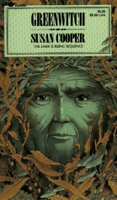 Buggers attacked earth, and all humans have banded together (sorta) to fight these aliens. There is a school for brilliant children to prepare them to lead the fleet to save humanity. Ender Wiggin is a third child with an older brother who goes beyond mean and an older sister who loves him dearly. (In a time when usually only two children are allowed per family, because his older brother and sister showed such promise, the government asked for a third child.) He passes all the tests and is taken away from all he knows to the school in the sky for training children. The core of the training happens in the battle room, where armies of children fight one another with lasers in null-gravity to learn and practice tactics, following, leading, winning. Ender is the best. At everything.
Buggers attacked earth, and all humans have banded together (sorta) to fight these aliens. There is a school for brilliant children to prepare them to lead the fleet to save humanity. Ender Wiggin is a third child with an older brother who goes beyond mean and an older sister who loves him dearly. (In a time when usually only two children are allowed per family, because his older brother and sister showed such promise, the government asked for a third child.) He passes all the tests and is taken away from all he knows to the school in the sky for training children. The core of the training happens in the battle room, where armies of children fight one another with lasers in null-gravity to learn and practice tactics, following, leading, winning. Ender is the best. At everything.
Through conversations (which precede each chapter) between adults who lead the various schools for children and control their lives to a large extent, the reader learns more about Ender. Like the fact that his older brother was too vicious and his older sister was too soft, so they hoped that Ender would fall in the middle. But that's not exactly true .. they wanted to someone who would be brilliant and able to win, but able to empathize. And Ender is able to do that. Able to understand his enemy completely and empathize -- and in that moment he defeats the enemy. Which is what the military needs to win, but is not the kind of person Ender wishes to be. One character says that we are all tools, and we are given the opportunity to choose who will use us. Which seems somewhat pessimistic, but also somewhat true -- as humans we are gifted and given certain abilities, and we are given the choice of what side we will serve -- if we will serve ourselves and seek pleasure, power, fame, money .. or if we will submit to God and seek Him instead of selfishness. At the conclusion, Ender has reached a certain peace about his life and what he has become - that he is not perfect and that in spite of both the evil and good that he has done he will continue to live each day and seek to do good. Enough hope for today.
| Title: | Ender's Game |
|---|---|
| Author: | Orson Scott Card |
| Date published: | 1977 |
| Genre: | Science Fiction |
| Series: | Ender |
| Number of pages: | 324 |
| Notes: | Repeat reading |








